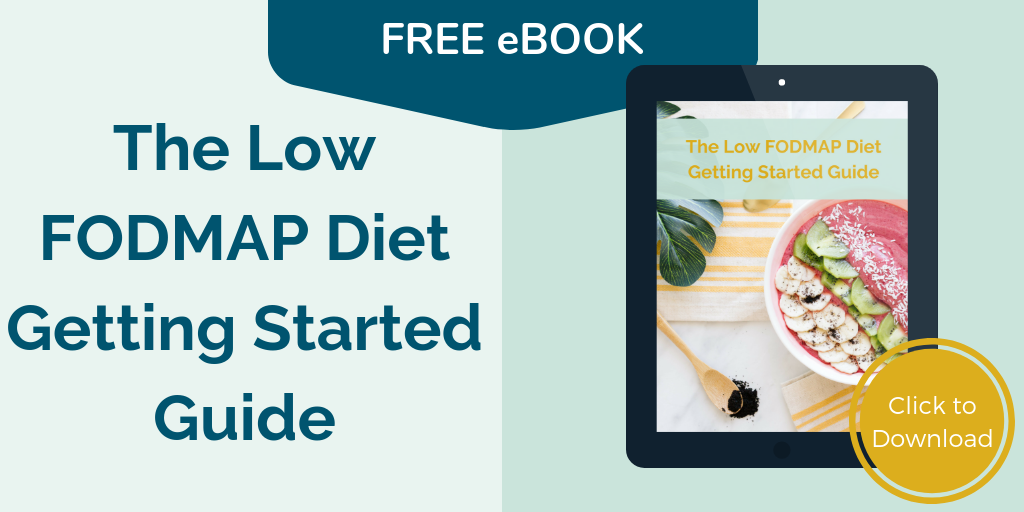Hey there.
I’m so glad you’re reading this post. For you, for your family – let’s get clear on an issue that’s come up quite often which is not talked online in the Low FODMAP information you can find out there.
How do you follow a Low FODMAP diet when you have a family?
If you have a family that you’re sharing meals with AND following a specific diet, like the Low FODMAP diet, it’s important you understand exactly what you need to do to keep your family healthy and well. Very often, not always, it’s not a good idea to share your dietary restrictions with your family. Let’s talk about this relating to the Low FODMAP diet specifically.
In this article, I’m going to break down a few specifics about the Low FODMAP diet that you need to know to keep your kiddos & family safe, what the healthy bacteria living in your gut needs, and how to accommodate changes to your menus and recipes so everyone is happy and well!
I’m a mama…
 So you may or may not know, I’m a mama. I have two boys, David and Deakon, currently 3 months and 3 years. I live in Waterdown, Ontario with these two little guys, my husband Stuart and my dog Harper. It’s quite a boy house over here, let me tell you… every time I open a drawer I find either a plastic dinosaur, toy car or something sticky! Every day I thank God for these beautiful people in my life and pray that they are safe, healthy and well. Whether you pray, or extend these thoughts out into the universe in another way, we as mamas and family people want what’s best for our people, right?
So you may or may not know, I’m a mama. I have two boys, David and Deakon, currently 3 months and 3 years. I live in Waterdown, Ontario with these two little guys, my husband Stuart and my dog Harper. It’s quite a boy house over here, let me tell you… every time I open a drawer I find either a plastic dinosaur, toy car or something sticky! Every day I thank God for these beautiful people in my life and pray that they are safe, healthy and well. Whether you pray, or extend these thoughts out into the universe in another way, we as mamas and family people want what’s best for our people, right?
That’s exactly why I get a little freaked out, when I think about all my beautiful people out there trying to follow the Low FODMAP diet, which can be damn hard to follow and implement, AND also taking care of family members.
I get how difficult it is to make the changes to your own diet, I’ve done it. It’s really REALLY hard.
It was 2011 when I started to eliminate and reduce the FODMAPs in my life. Since I was the main cook in my home and the babies weren’t here yet. My husband started eating way less FODMAPs too. AND since back then there was only a few research papers and a booklet you could order BY MAIL from Australia, I was pretty much just sorting out how to do this on my own.
Now I know better. Now I know that NO ONE should cut out all FODMAPs for their entire life. And NO ONE should give this diet to others to follow if they don’t have digestive issues.
And it’s why I created the Low FODMAP Diet Getting Started Guide. It’s a short eBook that will help you better understand the Low FODMAP diet so you know what you need to know about FODMAPs and if this diet is right for you. Click here to get a copy emailed to you now.
We Need FODMAP Foods for Good Gut Health
 Here’s the thing that they didn’t tell us (maybe they didn’t know?) back in 2011, when the early adopters and I were cutting out FODMAPs. FODMAPs are good for gut bacteria, we need them.
Here’s the thing that they didn’t tell us (maybe they didn’t know?) back in 2011, when the early adopters and I were cutting out FODMAPs. FODMAPs are good for gut bacteria, we need them.
Huh? Yes. Stick with me.
FODMAPs are very small sugar molecules. They are not very well digested in the gut, and easily ferment. This CAN, but doesn’t always, cause gas, bloating, abdominal pain, diarrhea or constipation.
Ok so that’s why if you’re dealing with these symptoms, you eliminate FODMAPs.
However, FODMAPs are in REEEEEEALLY healthy foods! Foods that are super delicious, good for your body, full of nutrients – and we know having a variety of foods is good for our bodies for a trillion different reasons (ok, that’s a lot, maybe a million different reasons). FODMAP foods include apples, pears, watermelon, cherries, cauliflower, onions, garlic, grainy breads, and more.
Remember that saying an apple a day keeps the doctor away? There is some truth to that. We need FODMAP foods in our diet, here’s why:
In this very old post from 2015 (yes 2015 is very old when it comes to FODMAPs) published by Monash University, the place where FODMAPs were discovered, Dr. Jane Varney advises “A strict low FODMAP diet should be trialed under the guidance of a dietitian, for a period of only 2-6 weeks.” She then goes on in her writing to share that FODMAP foods have a prebiotic effect, meaning they feed the healthy bacteria that live in our gut as well. And we need a variety of good bacteria to live in our gut to digest properly and be well. We are learning more and more about the gut microbiome and all the bacteria that live there each day, the research is growing and growing. Although we don’t know everything today, we know this…
The Low FODMAP Diet is NOT a Healthy Diet
Yes, I said it. You may have heard me say it before. I say it everyday to my clients, to my followers on Instagram, to the people who message me on Instagram, to the dietitians who email me with questions, THIS IS NOT A HEALTHY DIET.
(Am I getting ranty? Sorry, hang out a little longer and I’ll get to the good stuff.)
The Low FODMAP Diet has a purpose, follow it for a few weeks, max a few months, get relief from symptoms and get yourself feeling good again. Then systematically challenge FODMAPs to learn what you can eat and what your tolerances are. It can feel overwhelming, and that’s why I built my program and why it’s recommended by Monash (and all the FODMAP experts) to work with an expert dietitian. If you want some help with this process, email me (info@box5338.temp.domains) and we can talk more about working together.
For now, let’s get back to your family.
Your kids, your spouse, your roommate, your partner, your in-laws, whoever you are cooking for should NOT be eating Low FODMAP. They need these FODMAP delicious and nutritious foods AND they also need the FODMAP sugars in their gut helping their healthy bacteria thrive.
So how can you do this?
Keep Low FODMAP Cooking Simple For You and Your Family
Here are some tips straight from my kitchen where I cook from all my people, while reducing (not totally eliminating) my own FODMAP intake based on the triggers I’ve identified for myself:
- Take your portion of dinner out, then add in FODMAP ingredients like fresh garlic, green onions, etc.
- Just add FODMAP foods to your families lunch and dinner plates
- Steam or cook FODMAP vegetables separately and serve to your loved ones – for example steam cauliflower and broccoli in a little pot, while cooking yourself some quick green beans
- Choose Low FODMAP for you and FODMAP for them! For example, top your rice bowl with peanuts, while topping theirs with cashews or almonds
- Purchase FODMAP foods and include them as snacks, all the fruit, all the vegetables, pack them in lunches, serve them for snacks, get them in – the apples, the pears the goodness!
And MOST IMPORTANTLY my love… this one’s for you and your family…
You’ve got to ADD FODMAPS back into your diet. Seriously. Now I know I got a little ranty here on you and maybe a little intense? The passion inside of me for you to be healthy, well and live a beautiful life were you can go apple picking and take a bite, where you can go out for dinner and split an appetizer, I really truly believe you can have it. I’ve supported hundreds of clients to get their life back to normal, YOU CAN TOO! Believe it.
What you need to do is follow three simple steps:
- Get relief – I think with the Low FODMAP diet and other digestive strategies
- Challenge FODMAPs – strategically, small small portions, safely
- Expand your diet – bring multiple foods back, learn how to eat out, travel, enjoy and how to deal with flare ups
I know it can be overwhelming and a little scary. It took me a Loooooog time do this. But now I know the simple, safest way to do the challenge and reintroduction. Go slowly, take your time, work with an expert, join my program Clairity, whatever works for you. Just get into it.
I have built what I think is the safest way to challenge FODMAPs, so if you need a little help and want to chat about my program, shoot me an email. It would be my pleasure to help you!
For now, take care of yourself, and your family. And remember, you’re wonderful!
Got other ideas you use with family cooking? Hit me up on Instagram @stephanieclairmont and let’s share all your strategies, I’d love to hear from you.
Much love & wellness,
Stephanie Clairmont, MHSc, RD
Your Digestive Dietitian


